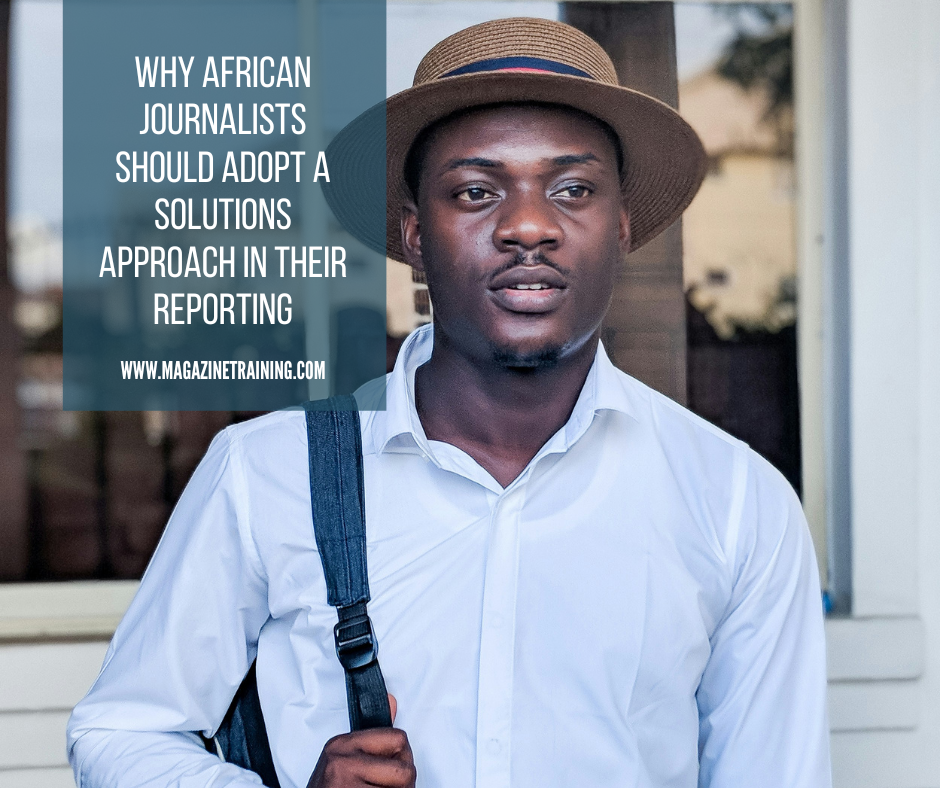
Independent media in Africa faces many challenges today. Political and economic crises are shaping negative perceptions of the continent, while issues around press freedom deepen, funding remains stringent, and confidence in media declines.
In this environment, newsrooms on the continent are attempting to better engage and build trust with their audiences.
This is where solutions journalism may be able to help. A reporting approach that prioritizes the comprehensive documentation of responses to societal issues, it seeks to identify what responses are being implemented, and how, while highlighting successes, failures, and lessons learned.
In doing so, solutions journalism can help newsrooms engage audiences and maintain sustainability. Here’s how:
Boosting engagement
Solutions journalism can help journalists better engage audiences and build loyalty.
In a report by the Engaging News Project, researchers found that the approach gets readers to spend more time reading articles in their entirety past the headline.
Newsrooms can also utilize a solutions approach to facilitate more direct engagement with the content produced, for instance by interviewing community members and leaders about ways they address problems. These types of interviews not only help boost engagement, they also encourage participation in these communities.
Tapping into community support
Newsrooms can leverage their solutions reporting to tap into support from local communities, and in turn attract funding. Further, outlets can seek funds from philanthropic bodies and non-governmental organizations that support projects centering on societal change and impacts.
The Seattle Times, for example, incorporated a solutions journalism approach in 2013 with the launch of its Education Lab, which covers promising approaches to challenges in public education in Seattle and across the northwest.
“It turned out to be a good method for The Seattle Times to tap a lot of community support for journalism even as a for-profit organization,” said Linda Shaw, the director of beacons and advanced practice at the Solutions Journalism Network and former Education Lab editor.
The success of the Education Lab led to a series of community-funded initiatives including Traffic Lab, Project Homeless and the Investigative Journalism Fund, Seattle Times publisher, Frank Blethen, explained in a 2021 piece he wrote for the paper. More than 800 individuals and entities, he noted, were providing direct support for their public-service journalism, ranging from $10 to $100,000. Businesses and foundations, meanwhile, provide multi-year funding.
“The folks who run philanthropic organizations are no different than our audiences who have experienced news fatigue and are interested in solving problems. This is an approach to journalism that takes that on directly,” Shaw said.
The African context
In Africa, a lack of data in critical sectors fuels poor governance on the continent, according to a 2024 study published by the Kenyan media organization, The EastAfrican. This also poses a challenge for journalists across the continent and impedes their efforts to back up the effectiveness of solutions in their reporting.
“With governments in Africa not doing much to aggregate national data, it’s always hard to tie a working solution to quantitative data,” said Chinonso Kenneth, publisher of Solutions Paper, a Nigerian solutions-focused media organization.
by Nneka Chile, International Journalists’ Network
Photo by Joshua Oluwagbemiga on Unsplash
Related posts
Magazine Training International’s mission is to encourage, strengthen, and provide training and resources to Christian magazine publishers as they seek to build the church and reach their societies for Christ.

